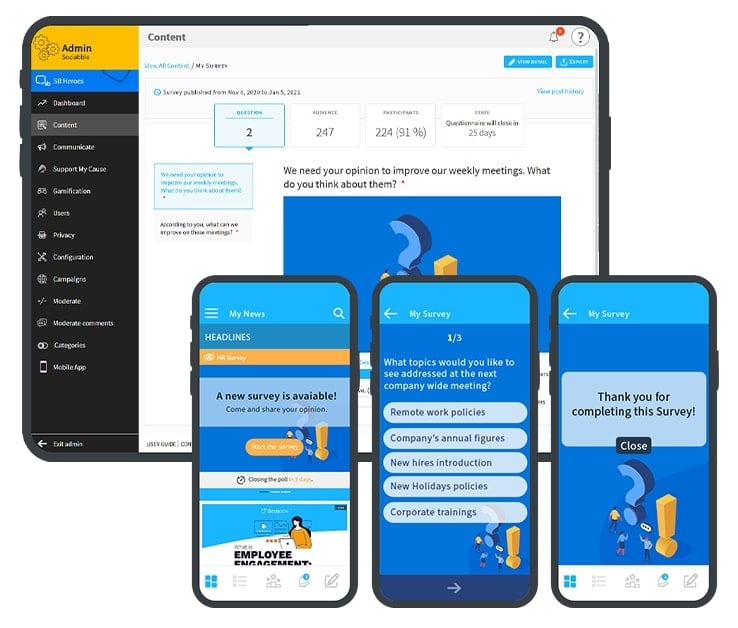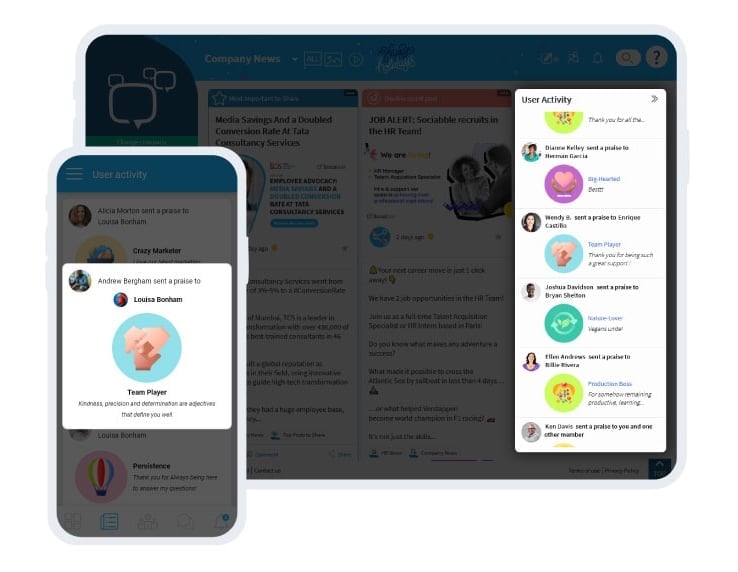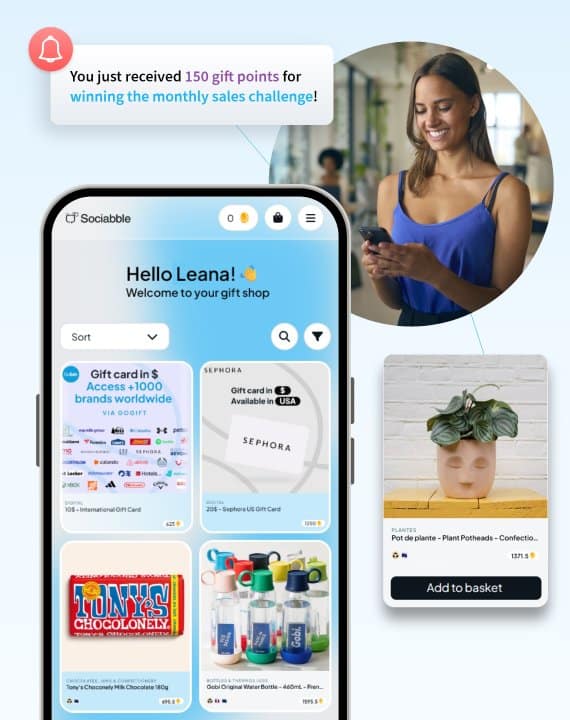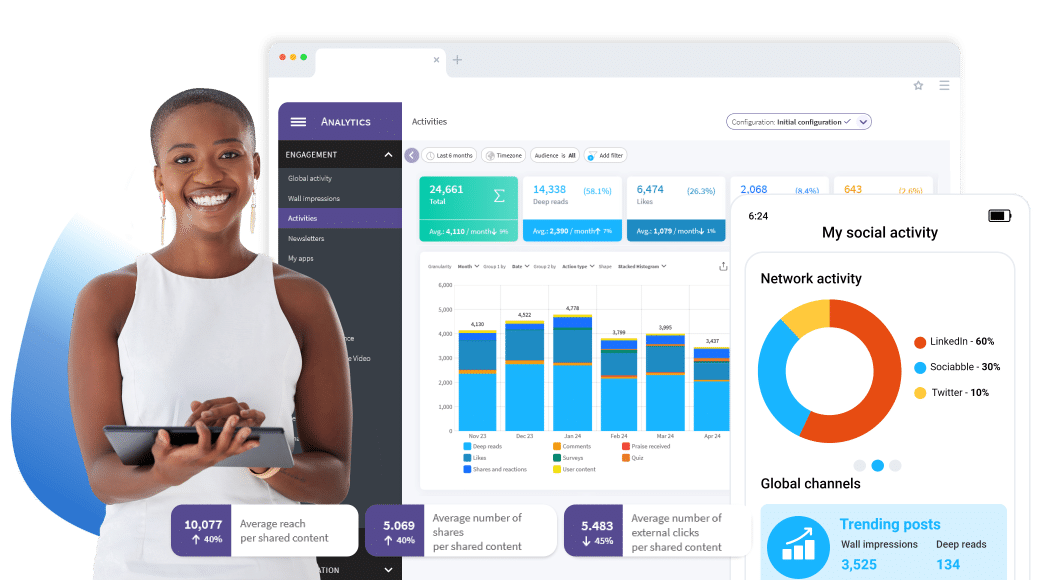Employee motivation is the driving force behind workplace productivity and innovation. In India, where workplaces are evolving rapidly, from traditional office setups to hybrid and remote models, keeping employees engaged and driven has become a top priority. Motivated employees contribute to higher employee performance, lower attrition, and overall organizational success.
However, motivation is not a fixed state; it shifts in response to workplace culture, leadership, career opportunities, and recognition. When engagement wanes, productivity stalls, creativity declines, and job satisfaction takes a hit. Gallup’s research highlights that only 21% of employees worldwide feel engaged at work, underscoring the urgent need for organizations to rethink their motivation strategies.
So, how can businesses create an environment where employees are inspired to give their best? This blog outlines 12 actionable strategies to enhance motivation, build a culture of enthusiasm, and drive long-term success.
12 Ways to Boost Employee Motivation
Employee motivation starts with the right leadership and company values. A combination of strong leadership, clear communication, recognition, and career development can increase employee motivation and create an environment where they are engaged and driven to contribute meaningfully.
1. Hire and Train the Right Leaders
Strong leadership sets the foundation for motivated employees and a positive workplace culture. In Indian workplaces, where hierarchical respect plays a significant role, a leader’s style can either inspire teams or lead to disengagement. Employees thrive under leaders who provide clear direction, build trust, and invest in their professional growth.
Empathy and mentorship are essential to nurture motivated employees. Leaders who take the time to understand employee challenges, offer constructive feedback, and support career progression foster a culture of trust and engagement.
Personalized leadership communication plays a crucial role in sustaining employee motivation. Leaders need real-time access to strategic updates rather than waiting for formal meetings to stay aligned with company goals. A dedicated communication tool can bridge this gap, ensuring that managers receive clear, consistent messaging, in order to provide timely guidance to their teams, reinforce company vision, and improve employee motivation high through transparency and clarity.
2. Set Clear and Achievable Goals
Employee motivation thrives when expectations are well-defined and aligned with broader business objectives. When employees understand what they are working toward and how their contributions impact the company, they stay engaged, focused, and driven to achieve results.
Using structured goal-setting frameworks like OKRs (Objectives & Key Results) helps create clarity and direction. OKRs break down ambitious company goals into measurable outcomes, ensuring that employees have a clear roadmap for success.
A well-defined goal-setting process ensures motivated employees feel a sense of purpose and accomplishment. Regular progress tracking and feedback help maintain momentum, reinforcing employee motivation and encouraging continuous improvement.
3. Strengthen Internal Communication
Employee motivation thrives when communication is timely, relevant, and accessible. A well-structured internal communication platform can ensure that employees receive updates based on their role, location, and language, keeping them aligned with company goals.
For India’s diverse workforce, multilingual communication can foster inclusivity and improve employee motivation. Mobile platforms with real-time notifications keep field employees connected, while targeted messaging ensures relevance. Upward communication tools, such as employee surveys and feedback channels, empower employees by making them feel heard and valued.
These elements form the foundation of an effective internal communication infrastructure, ensuring a workforce of motivated employees.

4. Recognize and Appreciate Contributions
Appreciation plays a crucial role in employee motivation. Employees are more engaged and driven when their efforts are acknowledged, reinforcing a positive work culture.
Recognition can take many forms, from traditional verbal appreciation and team celebrations to structured reward programs and digital rewards and recognition platforms. Many companies now use digital platforms to streamline recognition, ensuring that contributions are acknowledged in real time. Public acknowledgment – whether in a meeting, through peer-to-peer recognition, or via internal communication channels – boosts morale and encourages employees to maintain high performance.
5. Provide Constructive Feedback
Employees often look to their managers for mentorship and professional growth, making structured feedback a key driver of employee motivation. When feedback is clear, constructive, and focused on development, employees feel supported rather than criticized, encouraging continuous improvement.
One effective approach is the SBI (Situation-Behavior-Impact) model, which structures feedback by describing the situation, the observed behavior, and its impact. This method ensures that feedback is specific, objective, and actionable, helping employees understand how to improve without feeling demotivated.
Encouraging peer-to-peer employee recognition further strengthens employee motivation by fostering a culture of recognition and support. It boosts morale and reinforces positive behaviors across teams.

6. Offer Meaningful Rewards and Incentives
True employee motivation comes from well-rounded rewards that go beyond paychecks. Perks like flexible work arrangements, health benefits, festive bonuses (Diwali bonus!), and professional development opportunities create a sense of value and belonging, improving employee engagement and encouraging long-term commitment.
Many Indian companies are embracing gamified reward systems to enhance engagement. By turning achievements into interactive challenges with tangible rewards, businesses can keep motivated employees engaged.
A great example of experiential rewards is programs that allow employees to contribute to meaningful causes. Some companies offer sustainability-driven incentives, such as planting trees for every milestone achieved. These initiatives not only reward employees but also align with their values, making recognition more impactful and fulfilling.

7. Build a Healthy and Inclusive Workplace
A workplace that prioritizes diversity, equity, and inclusion (DEI) fosters stronger employee motivation. Employees feel more valued and engaged when they see representation across regions, backgrounds, and career levels, creating a sense of belonging and fairness.
Beyond inclusivity, supporting mental well-being is equally important. Indian companies are increasingly investing in wellness programs, stress management workshops, and mental health resources to help employees maintain a healthy work-life balance. Access to counseling, mindfulness sessions, and flexible work policies can significantly improve employee motivation and job satisfaction.
8. Encourage Creativity and Innovation
Innovation thrives in workplaces that actively encourage employees to share ideas. When employees feel empowered to contribute, their motivation increases, leading to fresh solutions and meaningful business impact. Companies that foster a culture of innovation create an environment where employees take initiative, collaborate, and drive continuous improvement.
Many Indian organizations leverage hackathons, ideation platforms, and internal innovation challenges to tap into employee creativity and improve employee engagement. For example, Sociabble’s ‘Support My Idea’ program enables bottom-up innovation by giving employees a voice in shaping company initiatives. Through this platform, employees can propose ideas, vote on the most impactful ones, and contribute to real business solutions.

9. Provide Learning and Career Growth Opportunities
What keeps employees motivated are clear opportunities for growth. A culture that prioritizes continuous learning makes employees feel valued, enhances their skills, and drives long-term employee engagement.
Many Indian companies are partnering with online learning platforms like Coursera and Udemy to offer upskilling opportunities tailored to different job roles. Leadership development programs and structured mentorship initiatives further help employees build expertise and progress in their careers.
To maximize the impact of learning programs, timely and targeted communication is key. Employee communication Platforms like Sociabble enable companies to tailor communication where employees receive only relevant learning updates based on their roles. For example, sales teams can automatically get notified and directed to the platform when a new sales training course is available.

10. Empower Employees with Decision-Making Authority
Employee motivation increases when individuals feel trusted to make decisions and contribute meaningfully to projects. Giving employees autonomy fosters a sense of ownership, accountability, and confidence, making them more invested in their work.
Many Indian startups encourage autonomy by allowing teams to experiment, take initiative, and drive their own projects. For example, Zerodha follows a flat, flexible culture where employees are given significant decision-making authority in their respective domains.
To gradually foster motivated employees, organizations can:
-
Start with small decisions, allowing employees to take charge of specific tasks.
-
Encourage cross-functional collaboration, giving employees more exposure to different areas of the business.
-
Recognize and support independent thinking, reinforcing that their input is valued.
11. Improve Work-Life Balance
In India’s corporate culture, where extended working hours can be seen as a sign of dedication, it can often lead to employee burnout and reduced intrinsic motivation. To counteract this, companies are increasingly adopting flexible work arrangements, such as remote or hybrid models, to promote a healthier work-life balance.
Implementing internal communication tools with features like “quiet notifications” can further support work-life balance by allowing employees to disconnect after work hours, reducing stress and enhancing overall well-being.
12. Understand What Truly Motivates Your Workforce
Employee motivation in India is shaped by cultural priorities such as financial stability, career growth, and social recognition. Understanding what drives intrinsic motivation enables organizations to craft engagement strategies that helps create a motivated workforce.
-
Cultural Factors Matter: Job security and career progression are significant motivators. Employees often seek roles that provide long-term stability and opportunities for upward mobility, both of which enhance their professional and social standing.
-
Engagement Surveys with Local Insights: Conducting customized engagement surveys that consider cultural expectations and aspirations can help companies measure employee motivation more effectively through valuable employee feedback. Questions tailored to work-life balance, family priorities, and job satisfaction provide richer insights into what keeps employees engaged.
-
AI-Driven Analytics for Deeper Insights: Advanced analytics tools can analyze workforce data to identify patterns in employee sentiment, engagement, and productivity. Metrics like Employee Net Promoter Score (eNPS) help gauge employee satisfaction and loyalty, while AI-powered sentiment analysis can predict disengagement before it becomes a problem.

Conclusion
Employee motivation is not a one-time effort but an ongoing process that requires a thoughtful and strategic approach. Organizations that prioritize leadership development, clear communication, recognition, and career growth create an environment where employees are engaged, valued, and inspired to contribute.
Companies that invest in intrinsic and extrinsic motivation see measurable benefits – higher productivity, lower attrition, and a culture of innovation. As workplaces continue to evolve, businesses must adapt their intrinsic and extrinsic motivation strategies to keep pace with changing employee expectations.
Key Takeaways:
-
Strong leadership and clear communication set the foundation for employee motivation.
-
Recognition and career growth opportunities drive long-term employee engagement.
-
Empowering engaged employees with autonomy fosters ownership and accountability.
-
A balanced work culture with flexibility and well-being initiatives prevents burnout.
We’ve worked with hundreds of clients in over 180 countries, including industry leaders like L’Occitane, Renault Group, Primark, and Coca-Cola CCEP, helping them engage employees, improve employee motivation and company culture.
To learn how Sociabble can help your company enhance its communication and strengthen its organizational culture, simply sign up for a free customized demo.
Want to see Sociabble in action?
Our experts will answer your questions and guide you through a platform demo.
